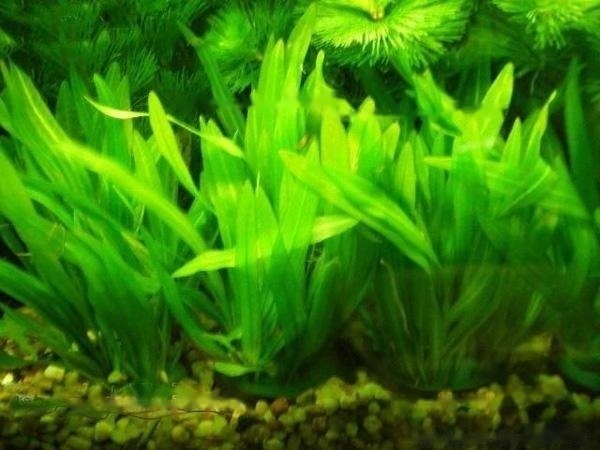
Planting some aquatic plants has an important effect on aquarium ornamental. To create the natural ecological environment of the aquarium, in addition to correct planting and lighting, regular pruning and continuous maintenance are major projects. Before pruning water plants, it is very important to prepare tools. So how to properly prune water plants, follow the editor to learn.
1. Cultivation and management of aquatic weed species
1. Aquatic weed culture methods: Three methods of planting aquatic plants are usually used: potted plants, sand plants and floating plants.
2. Selection of aquatic plants species: Fish aquatic plants cultivated in aquariums generally choose extensive management, well-developed roots and beautiful plant shapes. Such as: snapdragon, centipede grass, dragon grass, crown grass, water chrysanthemum, water orchid, etc.
3. How to plant water plants in pots: choose small porcelain flowerpots that are beautiful and have eyes on the bottom of the pots, put some stones on the bottom of the pots, and then use some small pebbles to press the roots after planting the water plants. After filling the flower pot, gently put it into the fish tank.
4. Sand planting method for aquatic plants: first, lay about 3 cm of washed and disinfected fine river sand on the bottom of the fish tank for sand planting, then plant the aquatic plants in the sand, and press the roots with small pebbles. , to prevent the water plants from being washed up due to water changes.
5. Floating planting method: Floating planting is to put the aquatic plants directly into the fish tank and let them float and grow.
6. There should be sufficient light: After the aquatic plants are planted in the tank, firstly, sufficient light should be given. The light should be no less than 6 hours a day. It is better to use fluorescent lamps to illuminate the aquatic plants, and all kinds of aquatic plants can grow well.
7. Temperature and quantity control: keeping the water temperature around 25℃ is most beneficial to its growth, and heating measures should be taken when the water temperature is low in winter. The third is to pay attention to the density of aquatic plants. The number of plants to be planted should be determined according to the size of the tank.
2. Selection of aquatic grass trimming tools
1. Selection and use of aquatic grass shears
?. Choose aquatic grass shears with good working performance.
?. Choose sharp grass clippers. When pruning with sharp scissors, it is not easy to make the incision incomplete at the pruning place of the aquatic plants.
?.Choose the water grass shears that can be used with both hands. In some corners of the water plant tank, you need to use the left and right hands instead to be able to prune smoothly, and it will not affect the quality of the pruning. Therefore, when choosing, this is one of the main points to consider.
2. Selection and use of water grass clips
?. So it is not easy to pinch the aquatic plants.
?.Choose the water grass clip with good elasticity. In order to prevent the aquatic plants from being broken by improper force when clamping the aquatic plants, the aquatic plants will be damaged.
?. After planting aquatic plants, sometimes the rhizomes will rot, causing the whole aquatic plants to float. Most of it is caused by the necrosis of the bottom of the stem due to careless operation during planting.
3. Pruning method of stemmed aquatic plants
1. Note that when pruning, the second trimming should be higher than the first trimming, such as the first trimming at the bottom The top of the bed should be trimmed at a height of about 5 cm, and the second time it needs to be trimmed at 8 to 10 cm, because the old stems will gradually become lignified, and new shoots will not grow.
2. Usually the whole plant will be pulled up, take the required length, trim off the excess part of the rhizome, leave three stem nodes and remove the leaves on the stem nodes. Completely implant two stem nodes into the bottom sand, leaving one stem node unplanted.
3. Two stem nodes implanted in the bottom sand. The first node is to prevent the root from being accidentally pinched by the aquatic plants and rotten during planting. The second node is usually in New roots will grow out before they rot. The third stem node will also grow roots on the bottom sand, making the aquatic plants more stable.
Fourth, the pruning method of clump aquatic plants
1. When pruning, it is not advisable to prune part of the leaves, because after the top photosynthetic point is pruned, the leaves will not be able to photosynthesize normally , harmful to the growth of aquatic plants. When pruning, do not do too much pruning, so as not to affect the normal growth of aquatic plants.
2. When planting bulbous aquatic plants, sometimes floating leaves will grow. If you want to maintain the growth pattern of water leaves, you can trim off the newly grown floating leaves from near the root and grow new ones. The petioles will be shortened, maintaining a beautiful posture.
3. If pruning a single plant of aquatic plants, the pruning method is the same as that of general clumps of aquatic plants, cutting off old leaves, yellow leaves, etc. If the stems are too dense, the water plants to be trimmed are cut directly from the stems, pulled up and discarded.
![[Dog Training 5] The training method of pet dog dining etiquette](/static/img/12192/12192_1.jpg)




